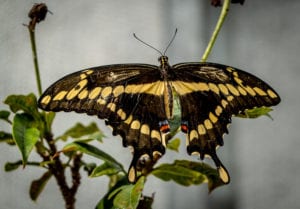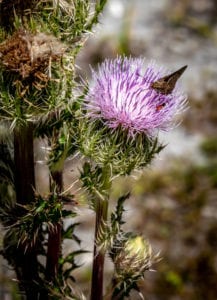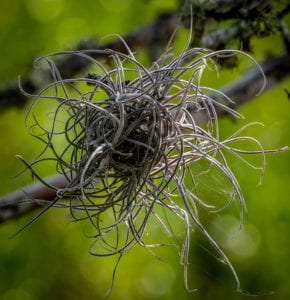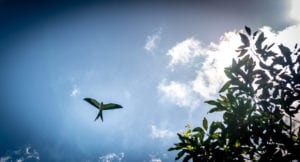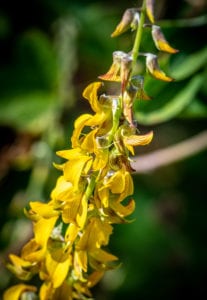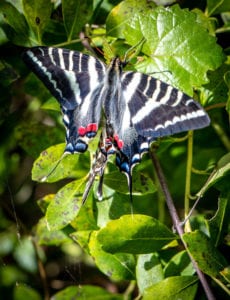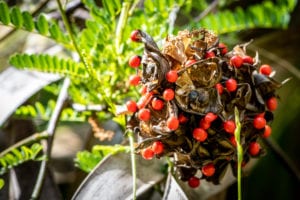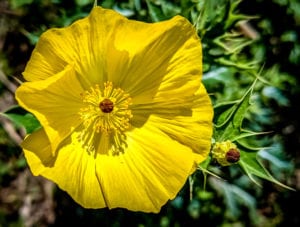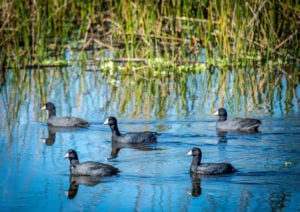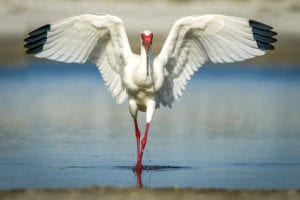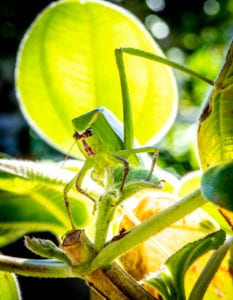This magnificent butterfly, the largest in North America, graces our gardens, woodlands, and citrus groves with its striking beauty and mesmerizing flight. From its impressive size and vibrant markings to its fascinating life cycle and ecological importance, the Giant Swallowtail Butterfly is a true emblem of Florida’s rich biodiversity. Let’s embark on a journey to […]
Flora & Fauna
- Air Potato (Dioscorea bulbifera)
- Alligator (Alligator mississippiensis)
- Alligator or Fire Flag (Thalia geniculata)
- American Avocet (Recurvirostra americana)
- American Beautyberry (Callicarpa americana)
- American Coot (Fulica americana)
- American Crocodile (Crocodylus acutus)
- American Oystercatchers (Haematopus palliatus)
- American Robin (Turdus migratorius)
- American white ibis (Eudocimus albus)
- American White Pelican (Pelecanus erythrorhynchos)
- Anhinga (Anhinga anhinga)
- Apple Snail (Pomacea canaliculata)
- Arrowhead (Sagittaria latifolia)
- Bald Cypress (Taxodium distichum)
- Ballmoss (Tillandsia recurvata)
- Barred Owl (Strix varia)
- Bella Moth (Utetheisa ornatrix)
- Belted Kingfisher (Megaceryle alcyon)
- Black Racer (Coluber constrictor)
- Black Skimmer (Rynchops niger)
- Black Vulture (Coragyps atratus)
- Black-bellied whistling duck (Dendrocygna autumnalis)
- Blue Crab (Callinectes sapidus)
- Bobcat (Lynx rufus)
- Brazilian pepper (Schinus terebinthifolia)
- Brown Anole (Anolis sagrei)
- Brown Pelican (Pelecanus occidentalis)
- Buckeye Butterfly (Junonia coenia)
- Burrowing Owl (Athene cunicularia)
- Buttonbush (Cephalanthus occidentalis)
- Cabbage Palm (Sabal palmetto)
- Caesar Weed (Urena lobata)
- Cane Toad (Rhinella marina)
- Cardinal Airplant (Tillandsia fasciculata)
- Carolina Wren (Thryothorus ludovicianus)
- Cattle (Bos taurus)
- Cattle Egret (Bubulcus ibis)
- Cogon Grass (Imperata cylindrica)
- Common bottlenose dolphin (Tursiops truncatus)
- Common Snook (Centropomus undecimalis)
- Corn Snake or Rat Snake (Pantherophis guttatus)
- Cucumberleaf Sunflower (Helianthus debilis)
- Dogfennel (Eupatorium capillifolium)
- Double-crested Cormorant (Phalacrocorax auritus)
- Eastern Lubber Grasshopper (Romalea guttata)
- Eastern Meadowlark (Sturnella magna)
- Feral Pig (Sus scrofa)
- Fetterbush (Lyonia lucida)
- Firefly (Lampyridae)
- Five-lined Skink (Plestiodon fasciatus)
- Florida Butterfly Orchid (Encyclia tampensis)
- Florida Cooter (Pseudemys concinna floridana)
- Florida Harvester Ant (Pogonomyrmex badius)
- Florida panther (P. c. couguar)
- Florida Scrub Jay (Aphelocoma coerulescens)
- Florida softshell turtle (Apalone ferox)
- Giant Katydid (Stilpnochlora couloniana)
- Giant Leather Fern (Acrostichum danaeifolium)
- Giant Swallowtail Butterfly (Papilio cresphontes)
- Golden Polypody Fern (Phlebodium aureum)
- Goldenrod (Solidago)
- Gopher Tortoise (Gopherus polyphemus)
- Gray Squirrel (Sciurus carolinensis)
- Great Blue Heron (Ardea herodias)
- Great Egret (Ardea alba)
- Great Southern White Butterfly (Ascia monuste)
- Green Anole (Anolis carolinensis)
- Green Iguana (Iguana iguana)
- Greenbrier (Smilax)
- Gulf Coast Tick (Amblyomma maculatum)
- Gulf Fritillary Butterfly (Agraulis vanillae)
- Indigo Snake (Drymarchon couperi)
- Julia Butterfly (Dryas iulia)
- Katydid (Tettigoniidae)
- Laughing Gull (Leucophaeus atricilla)
- Laurel Oak (Quercus laurifolia)
- Lightning Whelk (Sinistrofulgur perversum)
- Limpkin (Aramus guarauna)
- Loggerhead sea turtle (Caretta caretta)
- Longleaf Pine (Pinus palustris)
- Love Bug (Plecia nearctica)
- Magnificent Frigatebird (Fregata magnificens)
- Mangrove Buckeye (Junonia genoveva)
- Mangrove Tree Crab (Aratus pisonii)
- Marsh Rabbit (Sylvilagus palustris)
- Mexican Prickly Poppy (Argemone mexicana)
- Narrow-leaved Blue-eyed Grass (Sisyrinchium angustifolium)
- Needham’s Skimmer (Libellula needhami)
- Nine-banded Armadillo (Dasypus novemcinctus)
- Northern Bobwhite (Colinus virginianus)
- Northern Harrier (Circus hudsonius)
- Nuttall’s thistle (Cirsium nuttallii)
- Oak Toad (Anaxyrus quercicus)
- Orange Milkwort (Polygala lutea)
- Osprey (Pandion haliaetus)
- Painted bunting (Passerina ciris)
- Palm Warbler (Setophaga palmarum)
- Pickerel Weed (Pontederia cordata)
- Pileated Woodpecker (Dryocopus pileatus)
- Pine Lily (Lilium catesbaei)
- Pond Cypress (Taxodium ascendens)
- Pop Ash (Fraxinus caroliniana)
- Prickly Pear (Opuntia)
- Primrose Willow (Ludwigia)
- Purple Thistle (Asteraceae (Compositae))
- Raccoon (Procyon lotor)
- Railroad Vine (Ipomoea pes-caprae)
- Red Fox (Vulpes vulpes)
- Red Imported Fire Ants (Solenopsis invicta)
- Red Maple (Acer rubrum)
- Red Shouldered Hawk (Buteo lineatus)
- Red-bellied Woodpecker (Melanerpes carolinus)
- Reddish Egret (Egretta rufescens)
- Resurrection Fern (Pleopeltis polypodioides)
- River Otter (Lontra canadensis)
- Rosary Pea (Abrus precatorius)
- Roseate Spoonbill (Platalea ajaja)
- Rough Horsetail (Equisetum hyemale)
- Ruddy Turnstone (Arenaria interpres)
- Sandhill Crane (Grus canadensis)
- Sandwich Tern (Thalasseus sandvicensis)
- Savanna Iris (Iris savannarum)
- Saw Palmetto (Serenoa repens)
- Sea Grape (Coccoloba uvifera)
- Sea Oats (Uniola paniculata)
- Sensitive Pea (Chamaecrista)
- Shoestring Fern (Vittaria)
- Slash Pine (Pinus elliottii)
- Snowy Egret (Egretta thula)
- Southern leopard frog (Lithobates sphenocephalus)
- Southern Live Oak (Quercus virginiana)
- Southern Needleleaf (Tillandsia setacea)
- Southern Wax Myrtle (Myrica cerifera)
- Spanish Moss (Tillandsia usneoides)
- Spiny-backed Orb-Weaver (Gasteracantha cancriformis)
- Star Jasmine (Jasminum multiflorum)
- Starrush Whitetop (Rhynchospora colorata)
- Streaked Rattlepod (Crotalaria pallida)
- Sundew (Drosera)
- Swallow-tailed Kite (Elanoides forficatus)
- Swamp Hibiscus/Rosemallow (Hibiscus grandiflorus)
- Sword Fern (Nephrolepis exaltata)
- Tickseed (Coreopsis)
- Turkey Oak (Quercus laevis)
- Virginia Iris (Iris virginica)
- Virginia Opossum (Didelphis virginiana)
- Water Hyacinth (Eichhornia crassipes)
- West Indian Manatee (Trichechus manatus)
- White Mangrove (Laguncularia racemosa)
- White Peacock Butterfly (Anartia jatrophae)
- White Tailed Deer (Odocoileus virginianus)
- Wild Coffee (Psychotria)
- Wild turkey (Meleagris gallopavo)
- Willet (Tringa semipalmata)
- Wood Storks (Mycteria americana)
- Zebra Longwing Butterfly (Heliconius charithonia)
- Zebra Swallowtail Butterfly (Protographium marcellus)
Nuttall’s thistle (Cirsium nuttallii)
Ballmoss (Tillandsia recurvata)
Despite its name, Ballmoss is neither a true moss nor a parasite, but an epiphyte—a plant that grows on other plants for physical support without drawing nutrients from its host. Found throughout the southeastern United States and thriving in Florida’s diverse climates, Ballmoss is a fascinating example of nature’s adaptability and complexity. A Curious Appearance […]
Swallow-tailed Kite (Elanoides forficatus)
Arguably the prettiest bird around these parts, it shows up late February and heads back south in September. They can be seen in Myakka Park and flying over I75.
Streaked Rattlepod (Crotalaria pallida)
Been seeing these around a lot lately(March).
Zebra Swallowtail Butterfly (Protographium marcellus)
With its bold black-and-white stripes and elegant tail streamers, this butterfly is a dazzling spectacle in the wild. The Zebra Swallowtail’s unique appearance and fascinating behavior make it a beloved and captivating presence in Florida’s forests, gardens, and wetlands. Let’s embark on an exploration of the life, habits, and significance of this striking butterfly, a […]
Rosary Pea (Abrus precatorius)
Mexican Prickly Poppy (Argemone mexicana)
You can find these at the Celery Fields on the south side of Palmer Road.
American Coot (Fulica americana)
American white ibis (Eudocimus albus)
Greetings, birdwatchers and nature lovers! Today, we’re setting our sights on one of Florida’s most charming and entertaining residents: the American White Ibis (Eudocimus albus). With their graceful movements and quirky behavior, these birds are the comedians of the wetland world, always ready to put on a show. So, grab your binoculars and prepare to […]
Giant Katydid (Stilpnochlora couloniana)
Keep your eyes open for katydids, which are all over Sarasota, but are so well camouflaged, you’ll be lucky to spot one.
